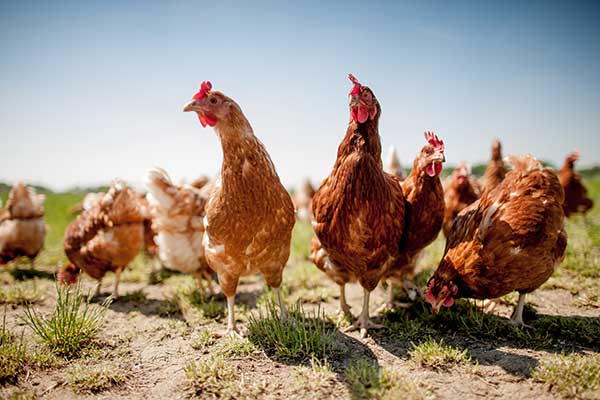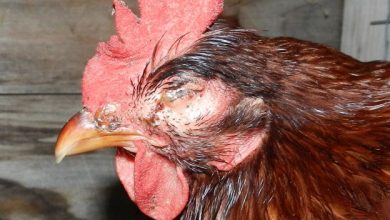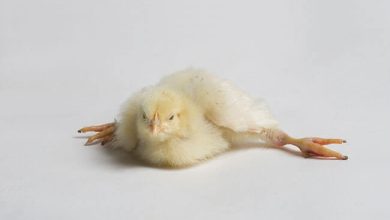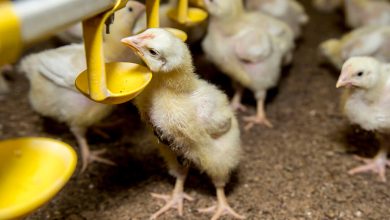EFFECT OF CLIMATE CHANGE ON POULTRY PRODUCTION, ADOPTION AND MITIGATION STRATEGIES

EFFECT OF CLIMATE CHANGE ON POULTRY PRODUCTION, ADOPTION AND MITIGATION STRATEGIES
Chongtham Sonia, M.Norjit Singh, Blessa Sailo, Chongtham Tania, A.Romila, Ch. Premabati, W. Anand Meetei, T.Basanta, N. Umakanta and Menalsh Laishram
CAR Research Complex for NEH Region, Manipur centre, Imphal, Manipur
Central Agricultural University, Imphal, Manipur
Corresponding address: Corresponding address:
Dr Chongtham Sonia, Scientist, ICAR- Manipur centre, Imphal, Lamphelpat-795004
Email address: drsonia.vet@gmail.com
Introduction
The Poultry Industry has emerged as the fastest growing segment of the livestock sector both globally and in India. As the world human population grows, expected to reach 9.5 billion by 2050, consumption of livestock products is also increasing. Influenced by various other consumption drivers, diets are changing in favour of products of animal origin, particularly the poultry products. Both USDA and OECD indicate that both India’s and global per capita consumption of poultry meat is growing, and chicken is India’s preferred non-vegetarian protein source. Poultry sector contributes about 1% to national gross domestic product (GDP) and 11% of total livestock GDP in India. The estimated rate of growth in layers is 6-7% per annum and 10-15% for chicken meat. Poultry plays an important economic, nutritional and socio-cultural role in the livelihood of poor rural households in many developing countries, including India. Poultry includes fowl, turkey, duck, goose, ostrich, guinea fowl, etc. which render not only economic services but contribute significantly to human food as a primary supplier of meat, egg, raw materials to industries (feathers and waste products), source of income and employment to people compared to other domestic animals (Avila, 1985; Demeke, 2004).
Global warming and climate change process is predicted to alter many geographical events like change in rainfall pattern and more frequent incidence of drought, which will impact the agricultural output and consequently the feed availability and price of the feed ingredients. Ambient temperature projections for this century indicate an increase between 3oC and 6oC. This increase will lead to heat stress in chicken causing high morbidity and mortality. The productivity of the heat stressed birds will be declined and the birds will be more prone to diseases. Under these circumstances, the feeding strategy, housing and other management practices followed presently have to be modified to overcome the adverse conditions. The selection strategy for both layer and broilers has to be oriented to produce heat tolerant lines or varieties. Genes responsible for conferring better adaptability may be introgressed into the high performing low adaptive lines through traditional as well as molecular breeding tools. The consumer awareness about the welfare of chicken raised for human consumption is high in recent times both in our country and abroad. This welfare awareness has led to the elimination of cage rearing of birds in some western nations. These welfare concerns are to be addressed by adopting housing systems that are less stressful and high in animal welfare. This will also become a necessity for exporting poultry products to overseas markets. Different housing types have to be evaluated for the maintenance or improvement of productivity, behavioural responses and stress levels. Climate can be defined as the sum of environmental factors which influence the functioning of man and animal.
Climatic factors
The following factors must be measured at animal level.
- Temperature
- Relative humidity
- Aircomposition
- Airspeed and air movement
- Light
Factors influencing climatic conditions and the birds’ microclimate
House climate can be influenced by insulation of roof, walls and floor, ventilation, heating, cooling and lighting. The climate directly surrounding the birds is called the microclimate (for example, chickens in a brooding ring). In fact the microclimate is the only thing that is of importance for the birds. It is possible that the climate in the house is acceptable but the climate at bird level is unsuitable. For example CO2 is a heavy gas and CO2 levels at bird level can be much higher than at 2
m height. Another example is the brooding ring. The use of brooding rings means that the temperature
of the house can be lower as long as the temperature at chicken level (under the brooder) is correct.
General guide to the reaction of adult poultry to various temperatures
| 55o to 75oF | Thermal neutral zone. The temperature range in which the bird does not need to alter its basic metabolic rate or behavior to maintain its body temperature. |
| 65o to 75oF | Ideal temperature range |
| 75o to 85oF | A slight reduction in feed consumption can be expected, but if nutrient intake is adequate, production efficiency is good. Egg size may be reduced and shell quality may suffer astemperatures reach the top of this range |
| 85o to 90oF | Feed consumption falls further. Weight gains are lower. Egg size and shell quality
deteriorate. Egg production usually suffers. Cooling procedures should be started before thistemperature range is reached. |
| 90o to 95oF | Feed consumption continues to drop. There is some danger of heat prostration among layers, especially the heavier birds and those in full production. At these temperatures,cooling procedures must be carried out |
| 95oto 100oF | Heat prostration is probable. Emergency measures may be needed. Egg production and feed consumption are severely reduced. Water consumption is very high. |
| Over 100oF | Emergency measures are needed to cool birds. Survival is the concern at these temperatures |
The most obvious constraint on poultry production is the climate. Poultry seems to be particularly sensitive to temperature-associated environmental challenges, especially heat stress. High temperature, especially when coupled with high humidity, imposes severe stress on birds and leads to reduced performance. It has been suggested that modern poultry genotypes produce more body heat, due to their greater metabolic activity (Settar, 1999; Deeb and Cahaner, 2002). Seo and Mendelsohn (2006) reported that high environmental temperature will be harmful to commercial poultry owners and warming causes the net revenue from all animals to fall. Pant (2011) also reported that farmers have to bear direct cost of climate change that involves reductions of yield in poultry and indirect costs of adaptation.
Thermoregulatory Mechanism of Poultry Birds
The internal body temperature of domesticated gallinaceous birds (chickens) at 106°F to 108°F is measurably higher than that of mammalian livestock and humans (97°F to 102°F). The upper temperature limit beyond which living cells and tissues progressively fail to operate is governed by the temperature at which enzymic proteins are destroyed by loss of shape and chemical activity. This starts to occur in the region of 46°C and thus poultry have considerably less leeway than other animals when suffering from heat stress and quickly succumb to higher temperature. In comparison, actual body temperature of poultry may fall as much as 20°C below the normal range with birds still making full recovery if carefully re-warmed. Poultry are not well adapted and disposed to high ambient air temperatures as they lack sweat glands in their skin and are therefore unable to gain much from natural evaporative cooling, although there is some direct diffusion of water through the skin tissue. Only the head appendages (e.g. comb) are very rich in blood vessels and able to act as sites for direct loss of heat, so poultry appears to have few limited options for heat loss in warm conditions. Domestic poultry is clearly less tolerant of heat than cold and much more likely to die from heat stress (hyperthermia) than succumb to stress associated with low temperature (hypothermia).
Heat Stress
Heat stress is a worldwide problem in poultry production, especially in broiler and layer lines. Heat stress begins when the ambient temperature climbs above 80oF and is readily apparent above 85oF. When a bird begins to pant, physiological changes have already started within its body to dissipate excess heat. Even before the bird reaches this point, anything that you do to help birds remain comfortable will help maintain optimum growth rates, hatchability, egg size, egg shell quality and egg production. High ambient temperatures can be devastating to commercial broilers; coupled with high humidity they can have an even more harmful effect. Heat stress interferes with the broilers comfort and suppresses productive efficiency, growth rate, feed conversion and live weight gain (Etches et al., 1995; Yalcin et al., 1997). In poultry production, heat stress can be described as acute or chronic. Acute heat stress refers to short and sudden periods of extremely high temperature, whereas chronic heat stress refers to extended periods of elevated temperature. Chronic stress has deleterious effects on birds reared in open-sided houses mainly through reducing feed consumption and increasing water consumption. Most of the reduction in feed consumption is due to reduced maintenance requirement.
Clinical Signs and Symptoms of Heat Stress
Poultry subject to high environmental temperatures exhibit many behavioral and physiological changes which allow them to re-establish heat balance with their surroundings. As ambient temperature increases above comfort zone, chicken spend less time in feeding, more time in drinking and panting, as well as more time with their wings elevated, less time moving or walking and more time in resting (Mack et al., 2013). Usually, their wings are spread away from the body to promote cooling by reducing body insulation and they splash water on their combs and wattles in order to increase evaporative cooling from these surfaces (Fedde, 1998). Heat stressed birds also spend relatively less time engaging in social behavior and in changing posture. In a natural environment, birds will look for a shady and cool area. Within the bird, blood flow is diverted from certain internal body organs such as the liver, kidneys and intestines to dilated blood vessels of the peripheral tissue (skin) in order to facilitate heat loss (Mustaf et al., 2009).
Effect of Climate Change on Poultry Production System
As previously seen, exposure of birds to high environmental temperature generates behavioral, physiological and immunological responses, which impose detrimental consequences to their performance and productivity. Hot climate can have a severe impact on poultry performance. It inflicts heavy economic losses on poultry production as a result of stunted growth (Sahin et al., 2001), decrease in hen-day production, increased cost of production, high rate of mortality due to depressed immunity, and reproductive failure (Ayo et al., 2011).
Growth and Production Efficiency
Heat stress depresses growth rate and production as a result of a down-turn in voluntary feed intake in birds (Sahin et al., 2001). It is apparent that the inhibition of growth and production in heat-stressed broiler birds is mediated via the stress hormones, especially the corticosteroids. Heat stress results in decreased feed consumption and increased water consumption. As temperature rises, the bird has to maintain the balance between heat production and heat loss and so will reduce its feed consumption to reduce heat from metabolism. Research demonstrated that feed consumption is reduced by 5% for every 1ºC rise in temperature between 32-38ºC.
Egg Quality
Heat stress limits the productivity of laying hens, as reflected by egg production and egg quality, as the bird diverts feed metabolic energy to maintain its body temperature constant, resulting in lower egg production, and particularly in lower egg quality (Hsu et al., 1998). Under high environmental temperatures, layer respiratory rate increases from eases from approximately 29 cycles per minute (mild environmental temperatures) to more than 100 cycles per minute (environmental temperatures above the thermoneutral zone). The resulting hyperventilation decreases CO2 blood levels, which may decrease eggshell thickness in approximately 12% (Campos, 2000). CO2 is responsible for eggshell quality improvement, as it may promote acidosis, which is subsequently compensated by kidney uptake of bicarbonate. Therefore, heat stress causes losses in egg weight, egg shell percentage, egg shell weight, and egg specific gravity
Meat Quality
Climate change could affect meat quality in two ways. First, there are direct effects on organ and muscle metabolism during heat exposure which can persist after slaughter. For example heat stress can increase the risks of pale-soft-exudative meat in turkeys, heat shortening in broilers and dehydration in most species. Second, changes in poultry management practices in response to hazards that stem from climate change could indirectly lead to changes in meat quality. Also, pre-conditioning broilers to heat stress to encourage better survival during transport could lead to more variable breast meat pH. The impacts that short term climate change could have will vary between regions (Gregory, 2010). It has been reported that chronic heat exposure negatively affects fat deposition and meat quality in broilers, in a breed-dependent manner (Lu et al., 2007).
Reproductive Performance
Heat stress caused decreased production performance, as well as reduced eggshell thickness, and increased egg breakage (Lin et al., 2004). Additionally, heat stress has been shown to cause a significant reduction of egg weight (3.24%), egg shell thickness (1.2%), eggshell weight (9.93%), and eggshell percent (0.66%) (Ebeid et al., 2012). The semen characteristics such as consistency, spermatozoa concentration, and seminal volume were depressed by environmental temperatures outside the zone of thermal comfort. In the study in which breeder hens were inseminated in the morning hours had a significantly higher fertility and hatchability than those obtained in inseminated hens during the afternoon hours (Obidi et al., 2008).
Embryonic Development
The incidence of adverse effects of heat stress on embryonic growth has been reported by various workers. Yalcin and Siegel (2003 and 2005) showed that over-heating fertile eggs during incubation resulted in differential tissue growth at different stages of incubation. The finding further showed asymmetries in skeletal development during the early and late stages of embryo development. Heat-stressed embryos, showed shorter face length and low lung weight, resulting in weaker chicks with high incidence of culled-out birds due to unsteady gait.
Immunity
In poultry, several studies have investigated the effects of hot climate on the immune response in recent years. In general, all studies show an immunosuppressing effect of heat stress on broilers and laying hens. For instance, lower relative weights of thymus and spleen has been found in laying hens subjected to heat stress (Ghazi et al., 2012) reduced lymphoid organ weights have also been reported in broilers under heat stress conditions and also observed. that broilers subjected to heat stress had lower levels of total circulating antibodies, as well as lower specific IgM and IgG levels (Bartlett and Smith, 2003).
Disease Incidence
According to Guis et al. (2011) reports, climate change will alter global disease distribution. High temperature has tremendous effect on prevalence of zoonotic diseases as well. The changes in climate may increase the insect vectors, prolong transmission cycles or increase the importation of vectors or animal reservoirs. It may also have an adverse effect on biodiversity, distribution and migratory pattern of birds which may lead to emergence of disease outbreaks. Climate change would almost certainly alter bird migration, influence the avian influenza virus transmission cycle and directly affect virus survival outside the host. In domestic poultry, too little is known about the direct effect of environmental factors on highly pathogenic avian influenza transmission and persistence to allow inference about the possible effect of climate change. However, possible indirect links through changes in the distribution of duck-crop farming are there, as reported by Gilbert et al. (2008).
Adverse effects of cold climate in poultry
- At low temperature there is high chick mortality, birds do not reach peak production during the expected period and sexual maturity is delayed in pullets.
- Cooler temperatures are immunosuppressive and thus predispose birds to infectious agents endemic in that environment.
- Respiratory infections like CRD, Infectious bronchitis and coryza etc.
Adoption and mitigation strategies
Feeding strategies under heat stress
- Offering pelleted feed to broilers can result in a 57% reduction in the energy required for eating, and hence direct such an amount of energy towards productive purposes.
- The occurrence of alkalosis in heatstressed birds has been known for a long time and the addition of ammonium chloride, potassium chloride and/or sodium bicarbonate have improved performance of broilers by improving water and feed • The dietary electrolyte balance (DEB) is probably more critical at high temperature.
- Heat stress always depresses appetite and therefore reduces nutrient intake, the use of electrolyte pack in the drinking water for 35 days during under heat stress has been shown to be helpful in most cases.
- Vitamin C supplementation is probably the most beneficial among vitamins, Recommend administration of 1 g ascorbic acid / liter drinking water throughout heat periods.In addition, a vitamin pack of A, D, E and B complex supplementation of drinking water is beneficial for both performance and immune function of heat– stressed broilers
- Water supply- Heat stressed birds can dissipate over 80% of their heat production via evaporative cooling. The evaporative heat dissipation extent and calories dissipated per breath are correlated with water consumption level and balance. With reduced water temperature, water consumption would be encouraged, thereby increasing evaporative cooling and heat dissipated per breath.
Feeding strategies for poultry under cold stress
- Birds require extra energy to keep themself warmed, so extra heat increments is to be provided. Extra handfuls of corn can provide this energy to keep the bird warm. Oats, barley and other energy inputs can be provided under cold stress. Both vitamin C and vitamin E can be given to increase immune response. The drinkers can be wrapped up in a layer of bubble wrap to help prevent freezing and adding slightly warmer water in the morning helps to keep in unfrozen for longer time
Housing management
House width
Traditionally poultry producers have found that natural ventilation tends to be most effective in houses which are 12 m in width or less. Wider houses tend to have lower air-exchange rates and significantly less natural air movement towards the centre of the house in hot climate and houses can be of any convenient length. All naturally ventilated houses must be equipped with some type of adjustable side-wall curtains to control the flow of air into the house during cooler times of the year or when small birds are present.
House orientation
Naturally ventilated houses should always be orientated in an east–west Direction. The reason for this is to minimize the possibility of direct sunlight entering the house . Direct sunlight striking upon a bird can dramatically increase the effective temperature a bird is experiencing. Direct sunlight can increase the surface temperature of a bird to well above 38°C, creating a heat stress situation at air temperatures that would not normally be thought of as problematic.
Roof overhang
A properly designed roof overhang helps to reduce the possibility of both direct and indirect sunlight entering a house during hot. If the overhang is not long enough than rain water can splash in and cause wet litter problem.The taller a house’s side wall, the longer a house’s roof overhang should be to prevent sunlight from entering the house. The closer the side-wall opening is to the ground, the longer the roof overhang should be. Roof overhangs should typically be a minimum of 0.6 m in most instances, but some houses with taller side walls and large curtain openings could benefit from roof overhangs of 1.25 m or more. Roof overhangs can also help direct rain coming off the roof of a houseaway from the house, as well as keep rain from directly entering a house.
Roof slope
Though there are structural considerations related to the most desirable roof slope for a poultry house, the optimal roof slope is more often determined by the level of roof insulation. In houses with uninsulated roofs a steep roof slope (45°) is highly desirable for a number of reasons. First, a steep roof slope tends to collect less radiant heat from the sun than does a flat roof. Second, a steep roof maximizes the distance between the birds and the hot ceiling, which reduces the amount of radiant heat the birds receive from the hot, uninsulated roof. A steep roof also encourages the superheated air immediately next to the ceiling to quickly rise towards the peak of the ceiling far from the birds. If the house has some type of an open ridge, the heated air will quickly leave the house
Roof sprinkling
Roof sprinkling is another method of reducing the heat gain from an uninsulated roof. If sufficient water is distributed uniformly on the roof surface, the roof temperature can actually be decreased below outside air temperature owing to the evaporation of the water off the surface of the roof.
Layer houses
In the case of layer houses, the type of cage system used has a significant effect on how well the house can be naturally ventilated during hot weather. A traditional two-deck system lends itself well to natural ventilation owing to the ease with which outside winds can pass above and below the cage system. Multiple rows of three- and four-deck systems make it increasingly difficult to naturally ventilate a house effectively.
Litter materials and management
Litter is the material used as bedding in poultry houses to absorb faecal waste from birds and to make the floor of the house easy to manage. Common litter materials are wood shavings, chopped straw, sawdust, shredded paper and rice hulls, and a wide range of other materials are used in different regions around the world. The recommended depth for litter is 5cm during hot summer and thickness of litter should be increased during cold winter. Reduction of stocking density by 10% will help in reducing heat stress in birds and during chill weather the stocking density should be increased by 5%.
Disease management
Heat stress makes the birds more susceptible to various disease conditions. Therefore, proper management practices to monitor the incidence, identification and control of most commonly occurred diseases should be given priority.
- Mycotoxicosis:
One of the most important cause of most important cause of mortaslity in chickens in hot humid climatic conditions. The best control of mycotoxin formation is to prevent the development of fungi in feedstuffs and complete feeds. Regular inspections of stores, and minimizing the storage time of feed. Detoxification of toxins by different non- nutritive agents should be taken up as when required. For example, for the detoxification of asflatoxins, activated charcoal, hydrated sodium calcium aluminosilicates, zeolite ores can be tried. Propionoc acid may be used as mould inhibitors during the storage of feedstuffs.
- Coccidiosis
Any incidence of coccidiosis should be controlled appropriately, since it will aggravate the condition of birds in heat stress. The anticoccidial drug Nicarbazin has been found to exert deleterious effect in the heat stressed birds. Therefore, administrationof Nicarbazin at a lower level in combination with a second coccidiostat is recommended. Besides, fasting and salt supplementation in drinking water have been observed to reduce Nicarbazin toxicity. The inclusion of amprolium in feed or water at very high levels may cause thiamine deficiency since this drug functions as specific antagonist of thiamine. Therefore, adequate supplementation of thiamine should always be checked whenever Amprolium is used.
- Vaccination
Vaccination programme, when properly carried out, can reduce the incidence of infection in a farm with improved performance. Water vaccination is one of the most commonly used methods of vaccine administration. Vaccines that are given in the drinking water are live vaccines and sensitive to high temperature. Care should be taken to reduce stress in birds before and after vaccination.
- Disinfection and Hygiene
For broiler, all-in all-out system in hot climate is most preffered method, since it ensures that appropriate disinfection programme can be carried out between the batches. Choice of proper disinfectant is important. The disinfectant should be capable of killing bacteria, viruses, fungi and insects. A disinfectant should be mixed properly with oil and water. It should also have detergent properties.
Conclusion
The production efficiency of chicken is more severely affected by high temperature during summer season. Climate change and poultry productions have always negative impacts one over the other. Heat stress is one of the most important environmental stressors challenging poultry production worldwide. The negative effects of heat stress on broilers and laying hens range from reduced growth and egg production to decreased poultry and egg quality and safety. However, a major concern should be the negative impact of heat stress on poultry welfare. Appropriate managemental practices can be adopted to reduce stress in birds due to climate change. The plan should begin right from the contruction of sheds, along with feeding, disease control and other managemental options.




